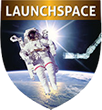Course Details
Course Summary
Since 1957, artificial satellites and launch vehicles have created an ever growing number of orbiting debris objects, from a few microns to several meters in size. In recent years a number of international agreements have been made to limit the growth rate of debris. However, there is no serious program to reduce the amount of existing debris. Recent developments such as the proliferation of debris from the Chinese ASAT test of 2007 and the 2009 collision of an Iridium satellite with a Russian Cosmos have raised level of urgency to actively manage the debris situation. Hundreds of debris items are added each year from new launches, failure of spacecraft and collisions. Mitigation approaches have been pursued and many reduction techniques have been suggested. A limited number of spacecraft are now able to maneuver out of the way at end of life. But, little is being done to reduce existing debris or to limit new debris. This timely course explains the dangers and options associated with the growing debris problem.
Course Materials
Each attendee receives a copy of presentation and reference materials.
Who Should Attend
- Space industry executives, decision makers, analysts and consultants
- Satellite operators and program managers
- Space mission designers and operations managers
- Senior professional engineers working in related fields
- Space policy writers and lawmakers
- Any professional wishing to gain insight into space debris issues and solutions
- Technologists involved in the projecting space applications into the future
What You Will Learn
- The nature and history of orbital debris and the space environment
- Debris-generated hazards of space flight
- Proliferation, propagation and collision events
- Mitigation and remediation approaches
- Methods of spacecraft protection
- The ultimate solution: a debris reduction program
- Technologies of rendezvousing with and grappling large debris objects
- De-orbiting systems, devices and techniques
- Policy, legal and economic implications
Course Outline
- Introduction to Orbital Debris
- The nature and make up of debris objects
- History of orbital debris development
- Population and distribution of debris fields
- Projections of future debris proliferation
- Suggested solution to mitigation and remediation
- Current state of debris distribution
- Fundamentals of Space Flight and Debris Production
- Orbital mechanics of debris dynamics
- Symmetries and proliferation of debris fields
- LEO and GEO debris populations and propagation of orbiting around the Earth
- The sources of space debris and what happens to it
- Description of the dangers to operating spacecraft
- Basic definitions
- International Committees Addressing the Debris Problem
- U.S. organizations
- European committees
- U.N. committees
- Other
- Density and Distribution of Orbiting Debris
- Description of debris sizes and numbers
- Near-term and long-term implications
- Buildup of collision events
- The “do-nothing” scenario
- The Debris Hunters
- Tracking space debris
- Space situational awareness
- Shortcomings of today’s technology
- Needed new technologies to predict debris impacts
- International Treaties and Agreements on Space Debris
- The main debris study sources
- International committees and working groups
- Most recent findings related to debris mitigation and management
- New treaties needed to facilitate debris reduction
- A New Space Program to Address Debris Reduction
- Technologies and Methods of debris reduction
- Early experiments to test possible solutions
- Debris reduction architectures
- Cost estimates
- Impact of Debris Reduction on the Overall Space Program and Industry
- New launch vehicles for debris clean up
- Special spacecraft for debris collection
- Maintaining normal satellite operations
- Schedules for debris reduction
- Objectives of a debris reduction program
- Conclusions
- The major issues
- Recommended actions
- Consequences of inaction
- Potential solutions to the debris problem
Instructor

Marshall H. Kaplan, Ph.D., is a recognized expert in space flight technologies, orbital mechanics and debris retrieval. He was the first to study space junk retrieval and was instrumental in the safe reentry of the Skylab Space Station in 1979. Foxnews.com aired a story about his four decades of research on this topic. Dr. Kaplan is one of only a few experts in the field of space debris control and reduction. He has over four decades of academic and industrial experience, having served as Professor of Aerospace Engineering at the Pennsylvania State University and presenting hundreds of courses on space technology in the U.S., Canada, Europe, South America and Asia. In addition to publishing some 100 papers, reports, and articles on aerospace technologies, he is the author of several books, including the internationally used text, Modern Spacecraft Dynamics and Control. Dr. Kaplan is a Fellow of the AIAA and a member if its Technical Committee on Space Transportation. He holds advanced degrees from MIT and Stanford University.
